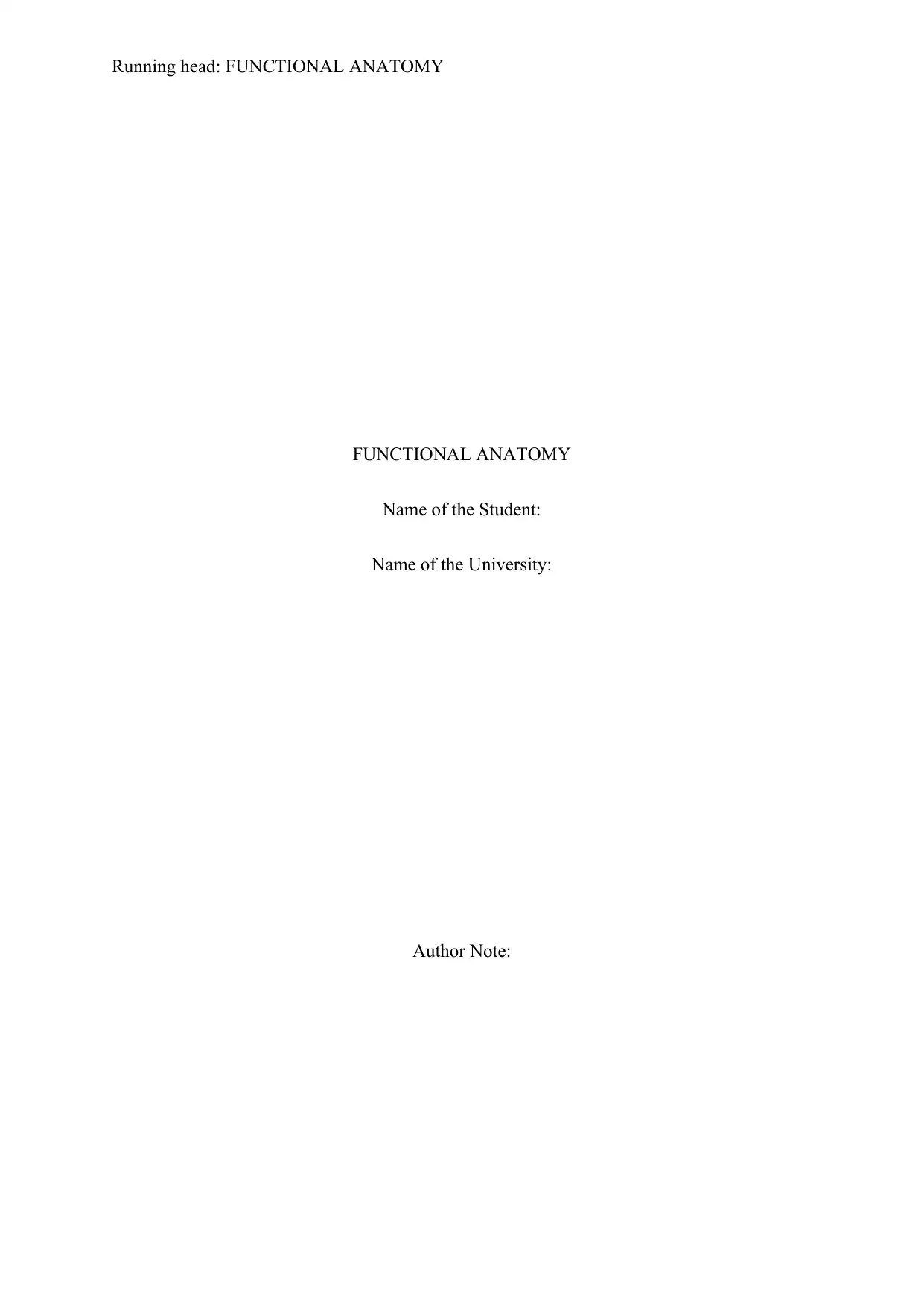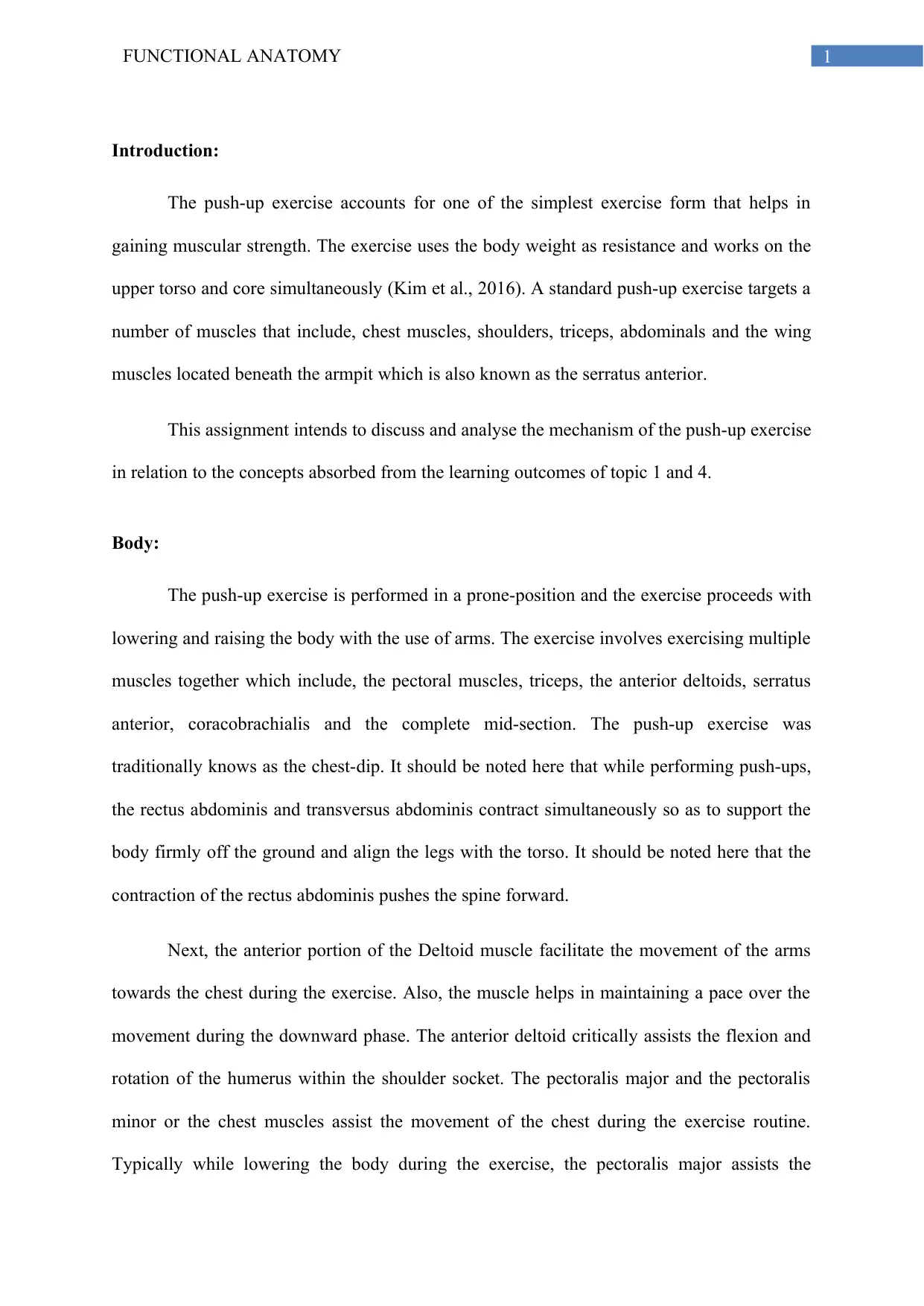Functional Anatomy of Push-up Exercise
VerifiedAdded on 2023/06/03
|4
|870
|180
AI Summary
This article discusses the mechanism of push-up exercise in relation to the concepts absorbed from the learning outcomes of topic 1 and 4. It critically works through exercising the major muscles connected with the spinal cord, arms and legs so as to promote a healthier body.
Contribute Materials
Your contribution can guide someone’s learning journey. Share your
documents today.
1 out of 4









![[object Object]](/_next/static/media/star-bottom.7253800d.svg)